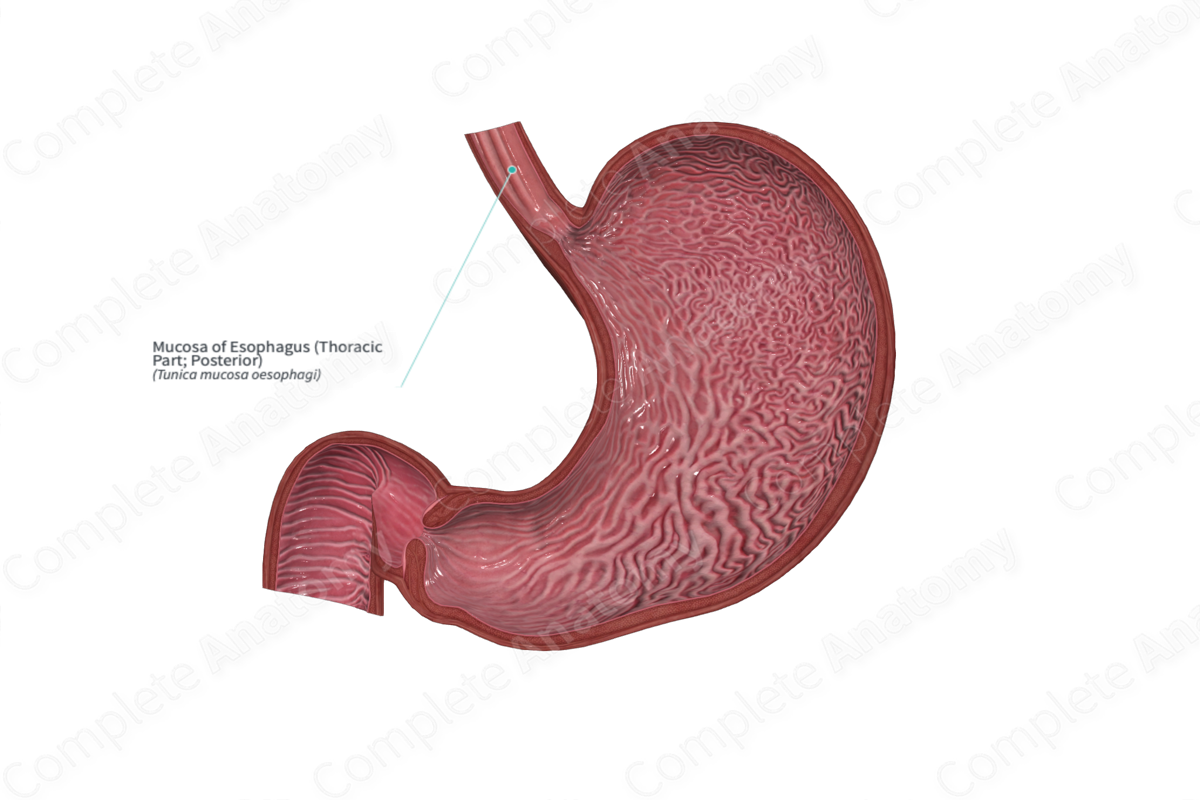
Structure/Morphology
The esophageal mucosa forms the internal lining of the esophagus. It is composed of epithelium, lamina propria, and muscularis mucosae. The epithelium is non-keratinized, stratified squamous, that is continuous with the oropharynx. It’s remarkably thick (300–500 μm), which adds to its protective function. Langerhans cells are present in the epithelium and perform antigen-processing and antigen-presenting roles that are important for immune defense. The lamina propria is composed of a group of mucosa-associated lymphoid tissue (MALT), which is also required for the immune defense. The muscularis mucosa contains longitudinally arranged smooth muscle that forms a thin sheet supporting the epithelium.
Related parts of the anatomy
Key Features/Anatomical Relations
Since the esophagus is a collapsed tube (anteroposteriorly) when at rest, the mucosa is thrown into deep longitudinal grooves throughout its length. However, these grooves disappear when the lumen of the esophagus is distended, e.g., when a bolus of food passes along it.
Function
Mucous produced by the mucosa helps to lubricate the esophageal lumen so that food can easily pass through it. Additionally, the mucous protects the esophagus from gastric acids that may leak from the stomach. Langerhans cells are present in the epithelium of the mucosa play an important role in immune defense.
List of Clinical Correlates
- Gastroesophageal reflux
Learn more about this topic from other Elsevier products
Esophagus Mucosa

Circumferential intramural dissection is defined by circular detachment of the esophageal mucosa and not associated with leakage of esophageal contents into the mediastinum or thoracic cavities.



